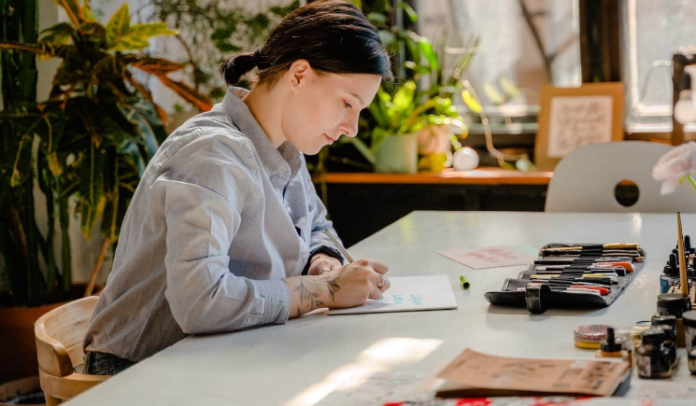How to create depth in the drawing. Here is one of the significant worries of those who try their hand at drawing and painting. The details can be satisfying, the colors harmonious, the proportions respected, and everything can have a good balance. However, it is the depth that is lacking. Creating a good sense of depth in paintings, as in drawings, is not simple or immediate.
The problem is that, without depth, the work can only be flat, which becomes particularly damaging when, for example, you want to paint a landscape. Unfortunately, the history of art itself also suggests that creating depth is not a foregone conclusion. For millennia, man has drawn and painted, but without giving a compelling sensation of depth. Below we will give you a long series of tips on creating depth in your drawings and paintings, revealing a wide range of different techniques.
Here is one of the significant worries of those who try their hand at drawing and painting. The details can be satisfying, the colors harmonious, the proportions respected, and everything can have a good balance: often, however, it is the depth that is lacking. Creating a good sense of depth in paintings, as in drawings, is not simple or immediate.
The problem is that, without depth, the work can only be flat, which becomes particularly damaging when, for example, you want to paint a landscape. Unfortunately, the history of art itself also suggests that creating depth is not a foregone conclusion. For millennia, man has drawn and painted, but without giving a compelling sensation of depth. Below we will give you a long series of tips on creating depth in your drawings and paintings, revealing a wide range of different techniques of cool drawings.
Depth for atmosphere
Here is another technique widely used to reproduce the feeling of depth in landscape paintings. Let’s imagine that we are outdoors, have trees in front of us, and then immediately behind some houses, and we again have some incredible mountains. There is no absolute emptiness between us and these objects: there is the atmosphere, with everything that composes it, including vapors, dust, and so on.
Therefore, to reproduce the feeling of depth on our canvases for painting, it can be beneficial to reduce the visibility as the distance increases, precisely because of an increasingly important “filter” that stands between our gaze and the objects observed. Therefore, if what is in the foreground is precise and detailed, the things in the background will be shapes that are gradually more confused, vaguer, and more nebulous.
Depth by the variance of solidity

Here is a technique that we can define as “improper,” which is widely used in the world of comics and, above all, animation to quickly and intuitively pass the impression of depth. In addition to the size of the objects represented due to the linear perspective, what varies, in this case, is the solidity of the things. Therefore, if we have a tree, an object, or a protagonist in the foreground, this will be designed with particular three-dimensional care, with a marked solidity. Conversely, however, everything in the background will be sketched, explicitly two-dimensional, to create a strong contrast with the foreground.
Depth through the overlap
An effortless technique to give the effect of depth: overlapping, or overlapping, consists of creating the desired depth by overlapping the object behind with the thing that is in front, thus partially obscuring it. To immediately give the idea that these two objects are separate and on two different levels, different shades and tones will use.
Depth by color
As anticipated, colors also come to our rescue to create depth within our paintings. Here it is necessary to consider the color temperature, starting from the assumption that by putting warm colors in front and cold colors behind (or vice versa), it is possible to obtain the desired depth effect.
In a predominantly light background painting, you will try to use cool colors in the foreground and warm colors as you move away to create a sense of depth. Conversely, with a predominantly dark background, we will start in the foreground with warm colors. The classic example sees hot and vibrant objects in the foreground against a cold experience in the environment.
Depth across rivers or roads
Here is another straightforward technique, also widely used by those who approach drawing for the first time. To give a sense of depth, it is, in fact, sufficient to draw a river or a road that, in the center of our landscape, move away towards the horizon, making curves to the right and the left, becoming more and more subtle.
Depth with lights and shadows
Finally, of course, depth can be created with the skillful use of light and shadow, and again, therefore, with the help of colors. Everything is in understanding where the light comes from and then using the colors at our disposal to make the most of this effect. Thus, a uniform blue pitcher hit by a ray of light can present itself to our eyes with yellow or completely white sections! Here, now you know how to create depth within your drawings and paintings: combine these techniques to create a realistic landscape capable of capturing the eye of the beholder!
Also Read: Online doctor consultation


